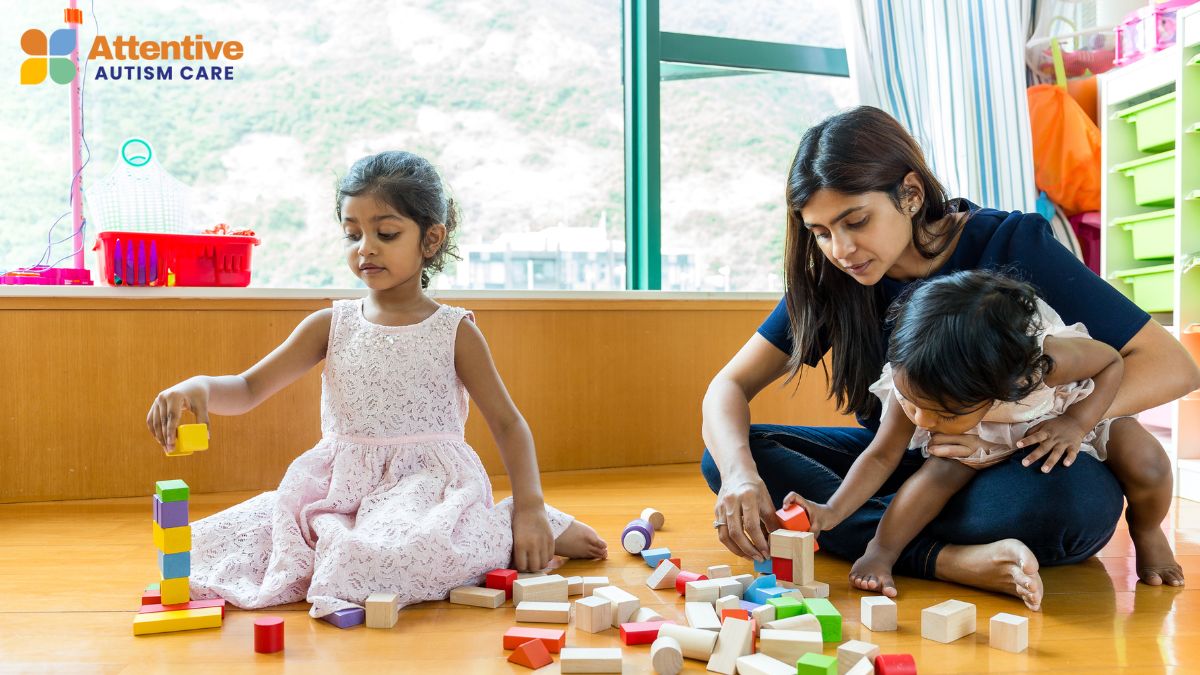Causes and Daily Challenges of Living with Autism Spectrum Disorder
Explore the common challenges faced by individuals with autism spectrum disorder (ASD), including communication difficulties, social interaction, and behavioral issues.

Key Points:
- Autism Spectrum Disorder (ASD) presents lifelong challenges that affect communication, social skills, behavior, and learning.
- While the exact causes are still being researched, genetic and environmental factors both play a role.
- Early intervention, including ABA therapy, can reduce the impact of core challenges and improve long-term outcomes.
Autism Spectrum Disorder (ASD) is a complex neurological and developmental condition that appears early in life and continues into adulthood. Despite growing awareness and improved diagnostics, many parents are left wondering how autism truly impacts their child, and what can be done to help.
The challenges of autism spectrum disorder span multiple areas of functioning, including speech, emotional regulation, sensory responses, and social understanding. According to one study, aggressive behavior is present in up to 56% of autistic individuals.
In this article, we’ll explore the primary causes, common challenges, and the real-life impact of autism on children and families, along with how targeted interventions like ABA therapy can help.
What Causes Autism Spectrum Disorder?
There is no single known cause of autism. Instead, most experts believe ASD is the result of a combination of genetic predispositions and environmental influences. Autism may also run in families, which points to a genetic component. Specific gene mutations have been associated with a higher likelihood of developing ASD, although no one gene has been identified as the sole factor.
Environmental factors that may contribute include:
- Prenatal exposure to toxins or infections
- Advanced parental age at conception
- Complications during birth or delivery
It’s important to note that vaccines do not cause autism, as confirmed by extensive scientific research. Instead, the condition likely begins during early brain development, often before birth.
What are the Core Challenges Faced by Individuals With Autism?
Autism affects each person differently, but some challenges are common across many children on the spectrum. These core areas tend to influence a child’s development, behavior, and interaction with others.
Below are key challenges associated with autism:
1. Communication Difficulties
Communication differences are often the earliest signs noticed by parents. These can range from delayed speech to difficulty understanding language or using it in social settings.
Some children may be nonverbal but still communicate through alternative methods such as sign language, AAC devices, or picture boards. These differences require ongoing support and individualized strategies to help the child express needs and build relationships.
2. Social Interaction Challenges
Autistic children often experience difficulty forming social connections—not because they don’t want to, but because social rules and cues are not always intuitive. These struggles can lead to feelings of isolation, especially as children grow older.
Teaching social skills explicitly, rather than expecting children to “pick them up,” can make a major difference.
3. Repetitive Behaviors and Rigid Routines
Many children with autism find comfort in routines and repetition. These behaviors serve as a way to create predictability and manage anxiety.
Disrupting routines can lead to distress or meltdowns, especially if transitions are sudden or unclear. Developing strategies to increase flexibility while honoring the child’s need for routine is a key support goal.
4. Sensory Sensitivities
Sensory processing differences are extremely common in children with autism. Some are hypersensitive to certain stimuli, while others may be under-responsive.
Sensory sensitivities can interfere with learning, play, and everyday routines. Occupational therapy, sensory diets, and environmental modifications can reduce sensory overload and help children feel more comfortable.
5. Behavioral and Emotional Regulation Struggles
Children with autism may find it hard to manage emotions or cope with frustration. These behaviors are not signs of “bad behavior,” but rather a signal that the child is overwhelmed or unable to communicate their needs. Understanding the cause behind a behavior is the first step in addressing it effectively.
6. Learning Differences and Cognitive Variability
Children with autism often experience uneven academic progress, especially when learning disabilities are also present. Many show strengths in specific skills but struggle elsewhere, so personalized education is key.
7. Impact on Family and Daily Life
Raising a child with autism can affect the entire family unit. Parents often juggle therapy appointments, school meetings, and managing challenging behaviors while getting connected to the resources and advocating for services.
Beyond day-to-day demands, many families also face the ongoing question of how their loved one will manage as they grow older and what level of support they will need to live as independently as possible. Access to community support, caregiver training, and professional guidance can help lighten the load and foster a more balanced and hopeful home environment.

How Can ABA Therapy Help Manage These Challenges?
Applied Behavior Analysis (ABA) therapy is a research-based intervention that targets the specific needs of individuals with autism. It focuses on teaching functional skills, reducing problem behaviors, and increasing independence.
ABA can help address the following challenges:
1. Language and Communication
Teaches children to request, label, and respond, improving functional communication through structured, evidence-based techniques.
2. Social Skills
Builds skills like turn-taking, sharing, and recognizing emotions to support positive peer and adult interactions.
3. Daily Living Skills
Promotes independence in everyday tasks like dressing, eating, and toileting through step-by-step teaching and reinforcement.
4. Reducing Problem Behaviors
Identifies triggers and teaches safer, more appropriate behaviors to replace aggression, self-injury, or frequent tantrums.
What makes ABA effective is its individualized approach—goals are tailored to the child’s current abilities and tracked over time through consistent data collection.
Reinforce Positive Habits With ABA Therapy
The challenges of autism spectrum disorder can affect many areas of life, but with early intervention and the right support, children can make meaningful progress.
At Attentive Autism Care, we provide compassionate and personalized ABA therapy to help children gain the skills they need to thrive.
We proudly offer ABA therapy in North Carolina, Colorado, Utah, Maryland, New Mexico, and Nebraska, working alongside families to create supportive environments where children can succeed.
Contact us today to learn more about how our ABA programs can support your child’s development and help your family navigate the journey ahead with confidence.




































































































